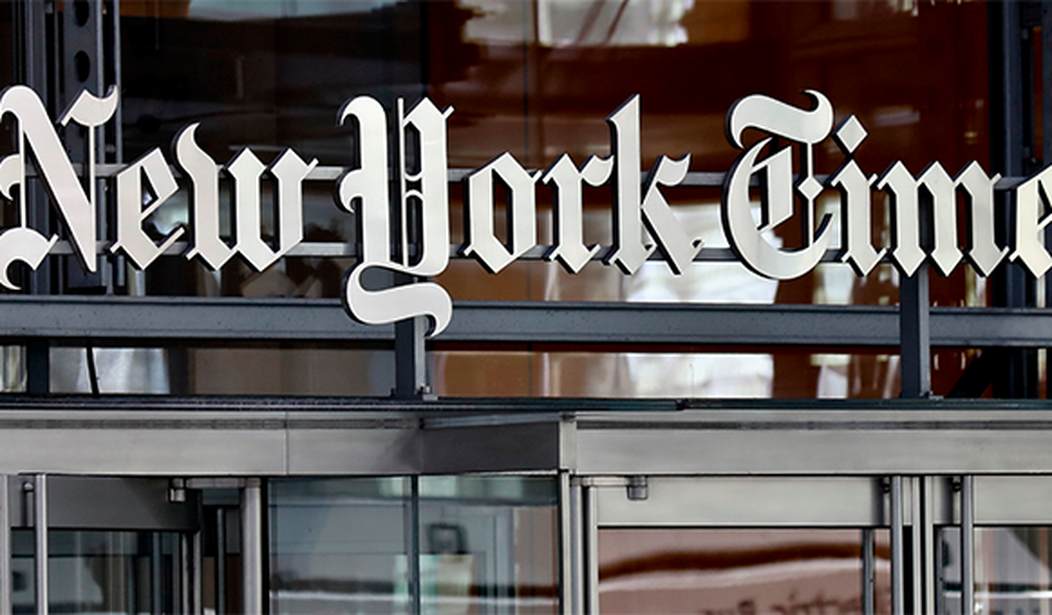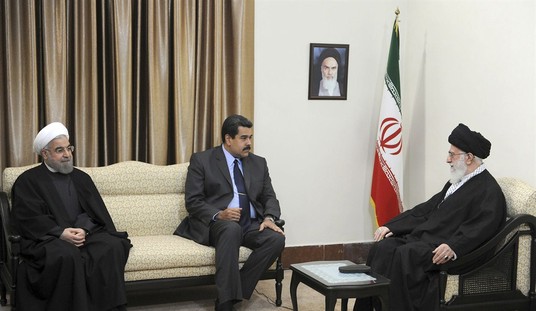“People see Iran as politically charged and oppressive,” wrote Neeknaz Abari in the New York Times this week, “But there is a lot of beauty and innocence.” This entry in a gushing Times travel piece, “52 Places to Go,” was just the latest, and one of the most egregious, attempts to normalize the brutal, repressive Death-to-America-chanting Islamic Republic in advance of Old Joe Biden reentering the Iran deal and starting the money flow back up to the bloodthirsty Iranian mullahs.
Abari’s pitch for Americans to visit Iran struck a plaintive note, tinged with victimhood: “There’s a difference between the people and the government. I wish Americans could see the vibrant curiosity of the people who live here. I used to visit Isfahan every year. I spent long mornings lifting weights in the women-only gyms, and afternoons with my grandfather, watching him lovingly watering the plants in his garden and shooing away stray cats. But divisive politics, and now Covid-19, have made it harder. My grandfather died two years ago. I wasn’t there. I feel my Farsi growing rusty on my tongue.”
Well, that is a terrible shame, and while Abari is correct that “there’s a difference between the people and the government,” it is ultimately the Iranian government that would be the beneficiary of the normalization that the Times is pushing for so assiduously. In Algemeiner, Ira Stoll notes that this push is going on even as it entangles the Times in self-contradiction: “‘Divisive politics’ is a euphemism for what a Times op-ed published this week accurately describes as Iran’s ‘appalling campaign of kidnapping and execution, its policy of using arrested dual nationals as hostages.’ A Times news article this week also acknowledged that ‘Al Qaeda’s second-in-command, Abdullah Ahmed Abdullah, who went by the nom de guerre Abu Muhammad al-Masri, was assassinated in Tehran in August.’ Said the Times news article, ‘It is true that Iran has consistently and unconvincingly denied housing Qaeda officials.’”
So why is the Times going out of its way to convince people that this inhuman regime is really not so bad as to preclude a lovely, idyllic trip to Isfahan, where one can, presumably, stop by Isfahan Central Prison and visit all the political prisoners, women’s rights activists and persecuted non-Muslims who are housed there?
The answer is clear. Joe Biden has pledged to return to return to the Iran nuclear deal, a move that is certain to be opposed by many among the Americans who still dare to oppose the regime publicly. Few people are aware of just how bad that deal really is; The Complete Infidel’s Guide to Iran explains some of its very worst aspects. While the Joint Comprehensive Plan of Action (JCPOA), as the agreement is called, did include real restrictions on Iran’s nuclear activities, these were all slated to expire in the near future. The agreement anticipated the “conclusion of consideration of the Iran nuclear issue by the U.N. Security Council 10 years after the Adoption Day” — that is, the adoption of the agreement itself on July 14, 2015. It added: “There will be no additional heavy water reactors or accumulation of heavy water in Iran for 15 years.” But what about after that? The agreement didn’t say. Apparently, at that point, Iran would be free to build nuclear weapons with no objections from anyone.
The JCPOA also contained the provision that Iran could delay requested International Atomic Energy Agency (IAEA) inspections for up to 24 days — ample time to clean up for the inspectors. The agreement was, moreover, quite definite about removing all economic sanctions on Iran. This included the removal of sanctions that had originally been intended to be removed only when Iran definitively gave up its nuclear program; now the Islamic Republic would be being given sanctions relief and allowed to continue its nuclear program, only with certain restrictions that would all eventually expire anyway. Sanctions relief allows the Iranian mullahs to finance jihad groups worldwide.
Meanwhile, last summer, as American Leftists screamed “Death to America” during riots in Kenosha, Wisconsin, Oakland, California and elsewhere, Iranian Ayatollah Lotfollah Dezhkam, Supreme Leader Khamenei’s representative in Iran’s Fars province, stated in a Friday sermon: “The shout of the Iranian nation [is] being heard from the mouths of the Americans themselves: Death to America!”
Dezhkam gloated over what he believed were signs of the imminent demise of the United States: “The entire world has seen with its very eyes that today, America cannot be the main decision-maker when it comes to strategic matters in the world. We are unequivocally informing the American administration, Republicans and Democrats alike: If you’ve shut your ears with cotton balls, remove them [so you can hear]. The sound of America being shattered and of its collapse, is being heard all over the world. The shout of the Iranian nation, which has been leading the fight against America for 40 years, is being heard from mouths of the Americans themselves: Death to America!”
Iranian President Hassan Rouhani said recently: “It is not important who is elected president, as the next US administration will surrender to the Iranian nation.” It is likely that Joe Biden’s regency for Kamala Harris will indeed “surrender to the Iranian nation,” as the disastrous precedent of the Obama/Biden administration makes clear. The New York Times, by painting Iran as a rosy place full of charms for Americans to savor, is doing all it can to hasten and legitimize that surrender.
Robert Spencer is the director of Jihad Watch and a Shillman Fellow at the David Horowitz Freedom Center. He is author of 21 books, including the New York Times bestsellers The Politically Incorrect Guide to Islam (and the Crusades) and The Truth About Muhammad. His latest book is Rating America’s Presidents: An America-First Look at Who Is Best, Who Is Overrated, and Who Was An Absolute Disaster. Follow him on Twitter here. Like him on Facebook here.










Join the conversation as a VIP Member